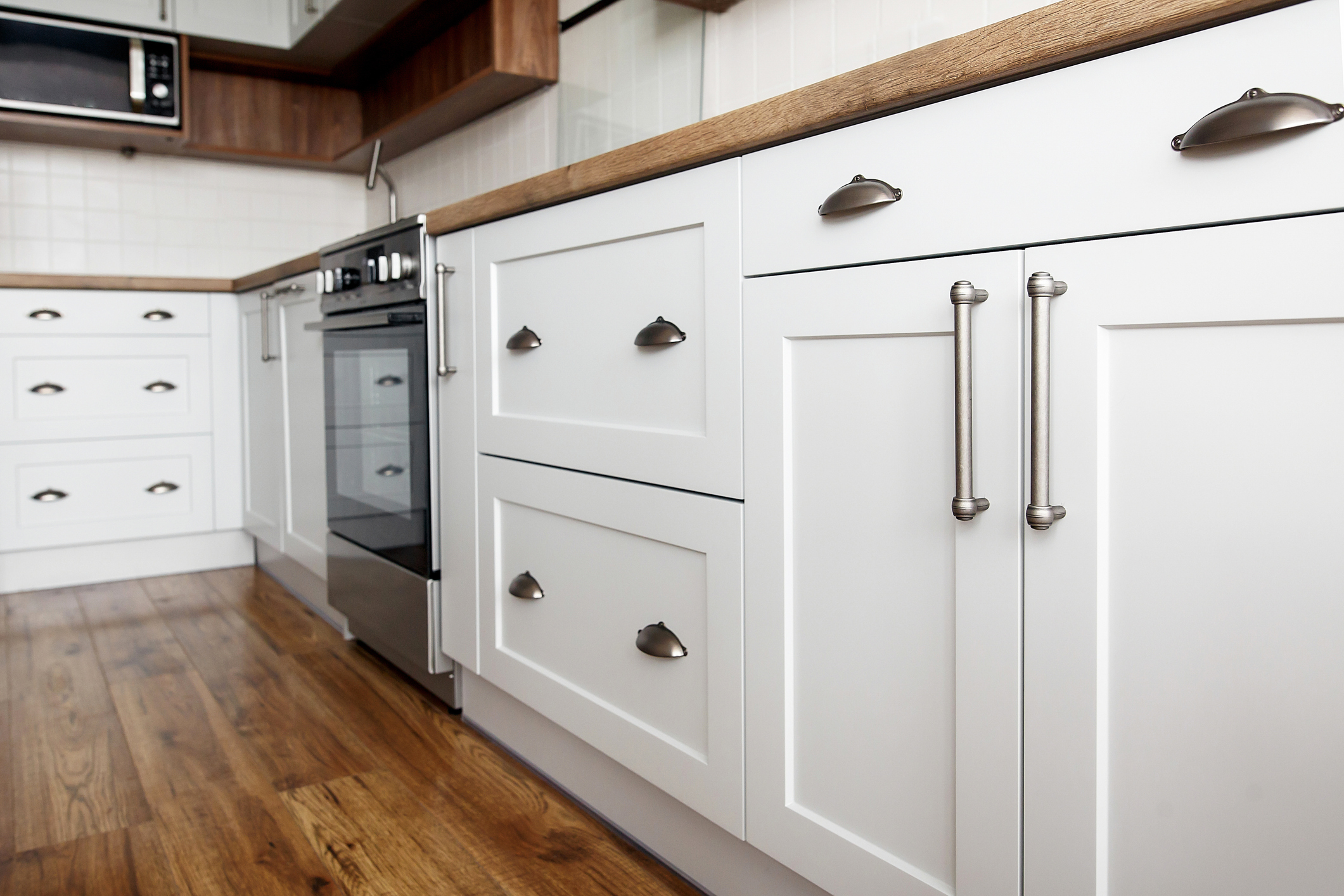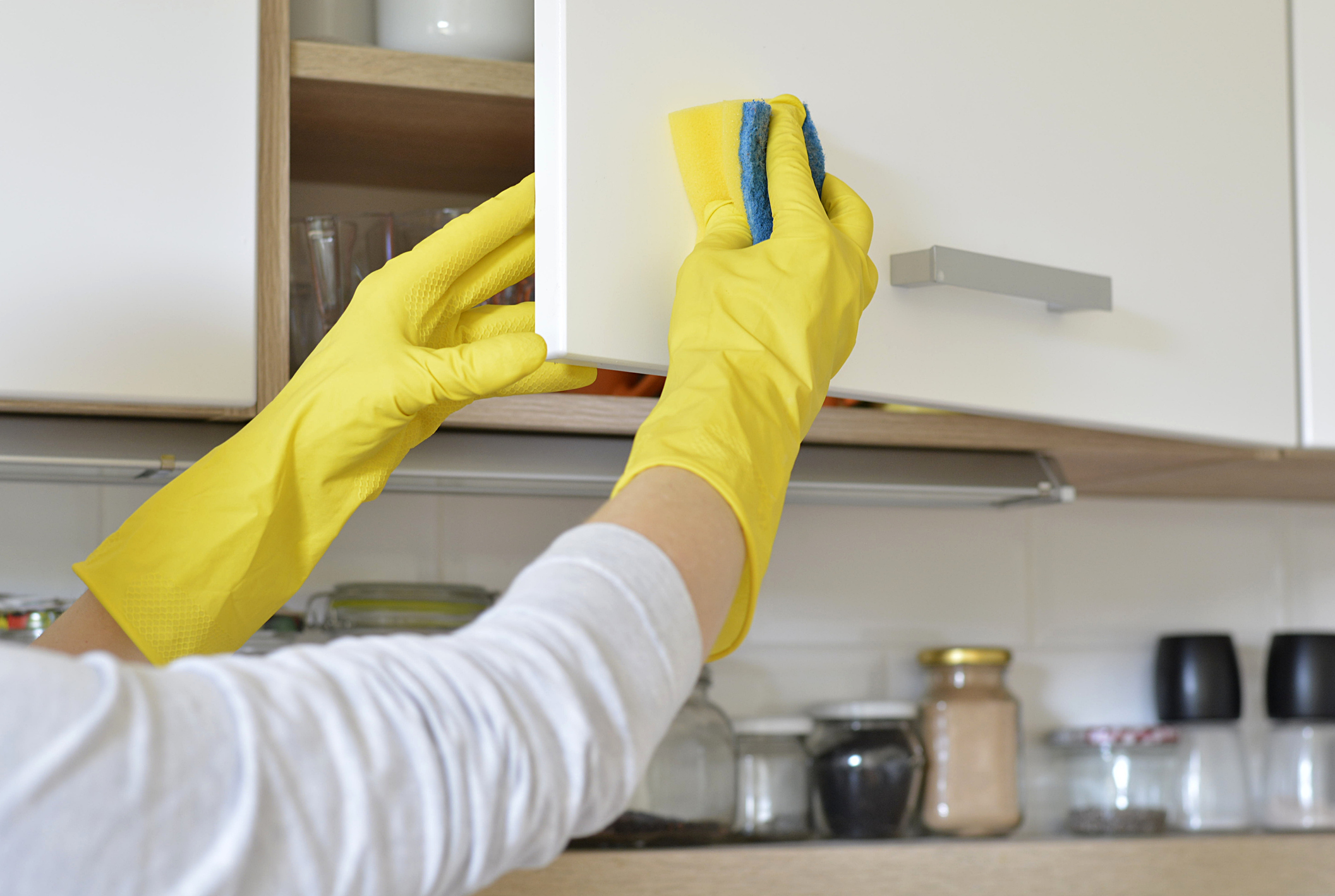Cleaning Supplies and Preparation

Cleaning laminate kitchen cabinet doors requires the right approach to avoid damage and achieve a sparkling finish. The type of grime you’re dealing with will dictate the best cleaning solution, and proper preparation is key to a successful clean. This section details the supplies you’ll need and how to prepare your workspace for a thorough and efficient cleaning.
Cleaning Supplies for Laminate Cabinet Doors
Choosing the right cleaning supplies is crucial for maintaining the integrity of your laminate cabinet doors. Harsh chemicals can dull or damage the finish, while inadequate cleaners might leave behind streaks or residue. A multi-pronged approach, using different solutions for different types of grime, is often most effective. For stubborn grease buildup, a degreaser is recommended. Sticky residues, such as spilled sugary drinks or food splatters, often respond well to a mild soapy solution. For general cleaning and maintenance, a simple solution of water and dish soap is usually sufficient. Always test any cleaning solution on an inconspicuous area first to ensure it doesn’t harm the laminate.
Preparing the Area for Cleaning
Before you begin cleaning, it’s essential to prepare the area to ensure a smooth and efficient process. This includes clearing surfaces, protecting surrounding areas, and gathering your supplies. Start by removing all items from the cabinet doors and shelves. This allows for thorough cleaning and prevents accidental damage or cleaning solution spills onto other items. Next, protect surrounding areas from potential spills. Cover countertops with old towels or newspapers. If you are cleaning near walls or other surfaces, use painter’s tape to protect them from accidental splashes. Finally, gather all your cleaning supplies – this includes your chosen cleaning solutions, microfiber cloths (or soft sponges), a spray bottle, and possibly a bucket for rinsing cloths. Having everything within easy reach streamlines the process.
Cleaning Solution Comparison
The following table compares various cleaning solutions and their effectiveness on different types of grime. Remember to always test any solution in an inconspicuous area first.
| Solution Name | Ingredients | Effectiveness on Grease | Effectiveness on Sticky Residue |
|---|---|---|---|
| Mild Dish Soap Solution | Warm water and a few drops of dish soap | Moderate | Good |
| Baking Soda Paste | Baking soda mixed with a small amount of water to form a paste | Moderate | Good |
| Commercial Degreaser | (Varies by product; check label for ingredients) | Excellent | Moderate |
| White Vinegar Solution | Equal parts white vinegar and water | Moderate | Good |
Cleaning Methods and Techniques: How To Clean Laminate Kitchen Cabinet Doors

Cleaning laminate kitchen cabinet doors requires a gentle yet effective approach to maintain their pristine appearance and prevent damage. The choice of cleaning method depends on the level of soiling and the type of laminate finish. Different techniques offer varying degrees of cleaning power, from simple wiping for light dust to more intensive scrubbing for stubborn grime.
How to clean laminate kitchen cabinet doors – Several methods exist for cleaning laminate cabinet doors, each with its strengths and weaknesses. Wiping with a damp cloth is suitable for everyday cleaning, removing dust and light smudges. For more ingrained dirt or grease, scrubbing with a slightly abrasive cleaner might be necessary. A steam cleaner offers a powerful, yet potentially risky, option for deep cleaning, effectively sanitizing surfaces but requiring careful application to avoid damage to the laminate finish. The effectiveness of each method is directly related to the level of soiling and the type of laminate.
Cleaning Hard-to-Reach Areas, How to clean laminate kitchen cabinet doors
Cleaning corners and crevices requires attention to detail and the use of appropriate tools. A soft-bristled brush, such as a toothbrush, can effectively reach tight spaces, dislodging stubborn dirt without scratching the laminate. For deeper crevices, a small, pointed cleaning tool, like a detailing brush or even a cotton swab dipped in cleaning solution, can be used. Remember to rinse thoroughly afterward to prevent residue buildup. Visualize a small brush gently working its way into the corner, dislodging particles of dust and grime, leaving the corner clean and shiny. Imagine the cotton swab meticulously cleaning a narrow gap between the door and the frame, ensuring no dirt remains.
Cleaning Cabinet Door Handles and Knobs
Proper cleaning of cabinet handles and knobs is crucial to maintain hygiene and the overall appearance of your cabinets. These areas are high-touch points and accumulate dirt and germs easily. The following steps ensure thorough cleaning without harming the finish:
- Begin by preparing a gentle cleaning solution. Mix a small amount of mild dish soap with warm water in a bowl.
- Dip a soft cloth or sponge into the solution, ensuring it’s not overly saturated to avoid dripping.
- Gently wipe the handles and knobs, paying close attention to crevices and corners.
- Rinse the cloth or sponge and wipe again with clean water to remove any soap residue.
- Dry the handles and knobs thoroughly with a clean, dry cloth to prevent water spots or streaks.
Cleaning Around Cabinet Hinges
Cleaning around cabinet hinges requires a delicate touch to prevent scratching the laminate surface. Visualize the hinge as a small, intricate mechanism, nestled between the door and the cabinet frame. The goal is to remove accumulated dust and grime without damaging the delicate finish.
To effectively clean around hinges, use a small, soft-bristled brush or a cotton swab dampened with a gentle cleaning solution. Carefully work the brush or swab into the tight spaces around the hinge, removing dirt and debris. Avoid excessive pressure to prevent scratching the laminate. Follow with a soft cloth to remove any remaining residue and to dry the area thoroughly. The result is a clean, polished area around the hinge, preserving the integrity of the laminate finish.
Post-Cleaning and Maintenance

Maintaining the gleaming beauty of your laminate kitchen cabinet doors after a thorough cleaning requires careful attention to drying and polishing, as well as implementing preventative measures. Proper post-cleaning care not only enhances the visual appeal but also extends the lifespan of your cabinets, protecting them from damage and premature wear.
Drying and Polishing Techniques
Effective drying prevents water spots and streaks, preserving the smooth, polished finish of your laminate surfaces. Immediately after cleaning, gently wipe down each cabinet door with a clean, soft microfiber cloth. The absorbent nature of microfiber helps to quickly draw moisture away, leaving the surface virtually streak-free. For extra shine, a final polish with a specialized laminate cleaner or a simple application of a furniture polish designed for non-porous surfaces can be used. This adds a protective layer and leaves your cabinets with a dazzling, showroom-ready luster. Avoid using abrasive cloths or paper towels, as these can scratch the delicate laminate finish. The gentle caress of a microfiber cloth is key to achieving a perfect finish.
Preventative Maintenance Strategies
Regular, light cleaning is far more effective than infrequent, intense scrubbing. Daily wiping down of frequently touched areas, such as cabinet handles and door fronts, with a damp cloth prevents grime buildup. This simple act significantly reduces the need for deep cleaning, saving you time and effort in the long run. Consider using a protective sealant designed for laminate surfaces to create a barrier against spills and stains. This added layer of protection makes cleaning easier and helps to preserve the original beauty of your cabinets for years to come. Think of it as providing a shield against everyday wear and tear, reducing the need for intensive cleaning.
Common Cleaning Mistakes and Their Solutions
Using harsh abrasive cleaners or scouring pads can easily scratch the surface of laminate cabinet doors, leaving unsightly marks. Always opt for mild, non-abrasive cleaners specifically formulated for laminate surfaces. Similarly, excessive scrubbing can damage the laminate’s protective layer. Instead of vigorous scrubbing, use gentle, circular motions with a soft cloth to effectively lift away dirt and grime without causing harm. Avoid using excessive amounts of water, as prolonged exposure to moisture can cause warping or damage. Always ensure that the surface is thoroughly dried after cleaning to prevent water damage and maintain the integrity of the laminate. Remember, gentle is key when dealing with laminate.
